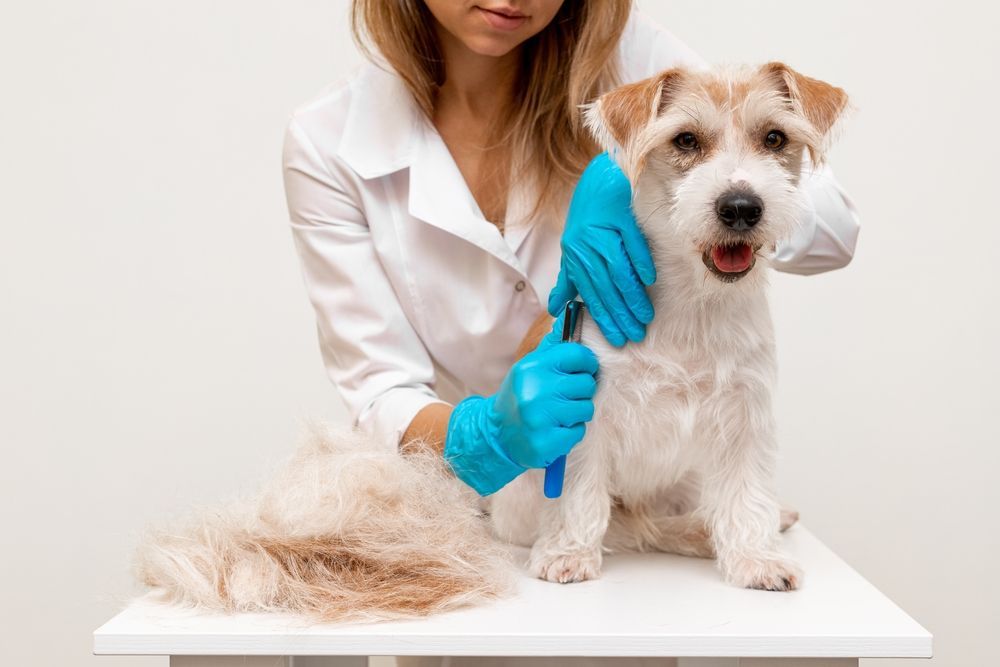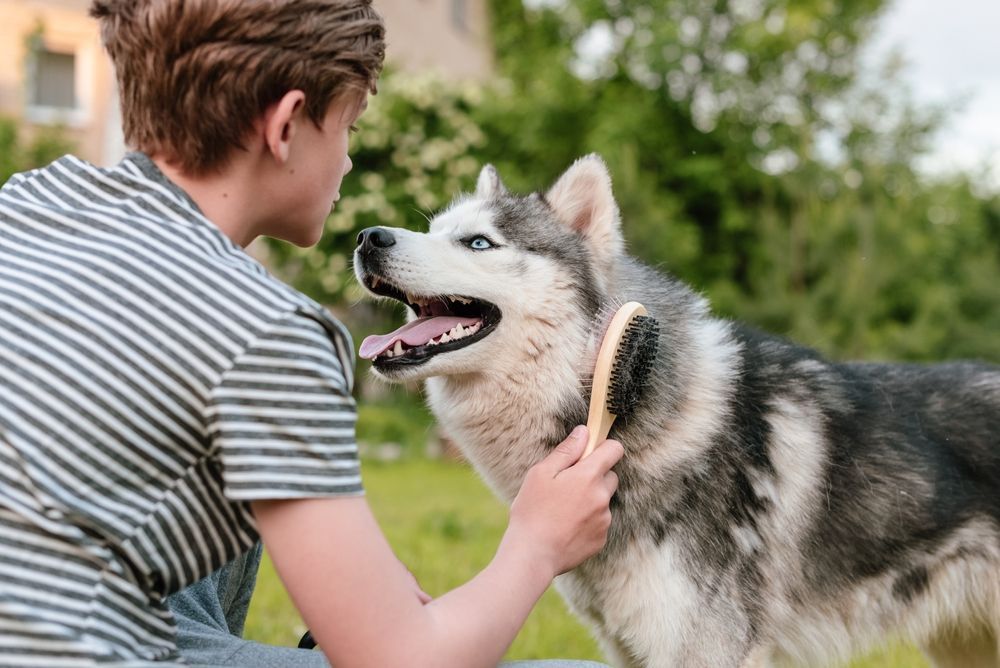Dog Ear Mites Symptoms Every Owner Should Know
As a pet owner, it’s heartbreaking to see your dog in discomfort, especially when the cause isn’t immediately obvious. One common yet often overlooked issue is ear mites, tiny parasites that live in your dog’s ears, causing irritation, itching, and even infections if left untreated. If you’ve noticed your dog shaking their head more often or scratching at their ears, ear mites might be the culprit. Recognizing the symptoms early is crucial for providing relief and preventing more serious health issues.
In this guide, we will walk you through the key signs of dog ear mites, how they can impact your pet’s health, and the treatment options available. By understanding these symptoms and acting quickly, you can ensure your dog’s ears stay healthy and prevent the discomfort caused by these pesky parasites. If you're new to pet ownership and can’t handle it yourself, mobile dog groomer can be the best solution for your furry friend
What Are Dog Ear Mites?

Ear mites, scientifically known as Otodectes cynotis, are parasitic organisms that live within the ear canal of dogs (and cats). These microscopic creatures feed on earwax and oils produced by your dog’s skin. While ear mites don’t cause significant harm in the short term, if they’re left untreated, they can lead to secondary infections and cause long-term damage to your dog’s ears.
Though more common in puppies and outdoor dogs, ear mites can affect dogs of all ages, sizes, and breeds. These parasites are extremely contagious, which means they can spread easily from one dog to another, especially in environments where animals are in close contact, such as animal shelters or pet parks.
Recognizing the Symptoms of Dog Ear Mites
Understanding how ear mites manifest in your dog’s behavior is essential for identifying the problem early. Here are some common symptoms that pet owners should watch out for:
Excessive Scratching and Head Shaking
The most common sign of ear mites is excessive scratching at the ears or shaking of the head. Your dog may start pawing at their ears more frequently in an attempt to alleviate the discomfort caused by the itching. If you notice your dog doing this repeatedly, it could be a dog flea symptom or a sign that something is wrong inside their ears.
Dark, Crusty, or Foul-Smelling Ear Wax
One of the most noticeable signs of ear mites is the presence of dark, crumbly earwax in your dog’s ears. This wax is a result of the mites feeding on ear oils, leaving behind debris. In some cases, a foul odor may also accompany the wax, indicating an infection or a secondary issue caused by the mites.
Redness and Swelling in the Ear Canal
If the infestation persists, the ear canal can become inflamed. The ear may appear red or swollen as a result of the irritation caused by the mites. This swelling can make your dog even more uncomfortable and lead to more aggressive scratching and head shaking.
Visible Mites in the Ear
In severe cases, you might be able to spot the ear mites themselves. Though they are small, they appear as tiny white specks, similar to grains of sand. It’s difficult to spot these mites without a microscope, but if you see them crawling around in your dog’s ear, it’s a definite sign that they have an ear mite infestation.
Constant Discomfort and Irritability
Dogs with ear mites will often display signs of irritability, especially when the discomfort from the itching becomes intense. Your dog may become more agitated than usual and may avoid you or other pets because of the constant need to scratch and shake their head.
How Do Dogs Get Ear Mites?
Ear mites are highly contagious and can spread quickly from one dog to another. The most common way dogs get ear mites is through direct contact with another infected animal. This could be another dog at the dog park, a shelter pet, or even an outdoor animal. Since ear mites are microscopic, they can also hitch a ride on shared grooming equipment or bedding.
Additionally, dogs that spend more time outdoors or in environments with multiple animals are at a higher risk of picking up ear mites. Although puppies are most commonly affected, adult dogs are also susceptible, especially if their immune systems are weakened or if they come into contact with infected animals.
Treating Ear Mites in Dogs

If you suspect that your dog has ear mites, it’s important to take action immediately. Left untreated, ear mites can lead to severe ear infections, permanent damage to the ear canal, and other health complications. Fortunately, treatment is relatively simple, and there are several effective options available.
Topical Medications
Topical treatments are often the first line of defense in treating ear mite infestations. These medications come in the form of ear drops or ointments that are directly applied to the ear canal. The medicine works by killing the mites and reducing inflammation in the affected ear. It’s important to follow the treatment instructions carefully to ensure that all mites are eradicated and that your dog’s ears heal properly.
Ear Cleaners and Wipes
In addition to topical treatments, veterinarians may recommend ear cleaners or wipes to help remove debris from your dog’s ears. These products help eliminate the wax and crust that mites leave behind, providing relief to your dog. Regular ear cleaning also helps prevent future infestations and keeps your dog’s ears free from buildup. But for better results, you should know the professional dog ear cleaning process; otherwise, you can get help from expert groomers.
Oral Medications
In some cases, particularly if the infestation is severe, oral medications may be prescribed. These medications are designed to kill the mites from the inside out and may be necessary for dogs with recurring infestations. Your veterinarian will advise whether oral medications are appropriate for your dog’s situation.
Regular Grooming
A professional mobile dog groomer can help identify ear issues early on during grooming services. Groomers are trained to spot signs of ear mite infestations, along with other common pet issues. Scheduling regular grooming appointments can help maintain your dog’s overall health and keep their ears clean, reducing the risk of future infestations.
Preventing Ear Mites in Dogs
While it’s not always possible to prevent ear mites entirely, there are several steps you can take to reduce the risk:
Keep Your Dog’s Ears Clean
Regularly clean your dog’s ears to prevent a buildup of wax and oils. This will discourage ear mites from setting up shop. Use vet-approved ear cleaners that are safe for your dog’s ears. However, avoid over-cleaning, as this can irritate the ear canal.
Limit Exposure to Other Pets
If you have other pets in the home, be sure to keep them away from any animals with ear mites. You may also want to limit your dog’s exposure to public spaces like dog parks or shelters, where ear mites are more likely to spread.
Use Preventive Treatments
Ask your vet if any preventive treatments or medications can help protect your dog from ear mites. These treatments are typically part of your dog’s routine health care, such as flea and tick prevention.
Regular Veterinary Check-ups
Routine veterinary visits are crucial for ensuring your dog’s health. Your vet can check your dog’s ears during regular exams and treat any potential issues early on, including ear mite infestations.
Conclusion: Keep Your Dog’s Ears Healthy and Comfortable
Ear mites can be a nuisance for both you and your dog, but catching the problem early can make all the difference in your pet's comfort and well-being. Regular grooming, ear cleaning, and veterinary care are essential in keeping your dog’s ears healthy and free from these irritating pests.
With the right care and attention, you can help prevent ear mite infestations and protect your furry companion from the discomfort they cause. For a stress-free grooming experience and to stay on top of your pet's health, consider scheduling a professional grooming appointment that includes thorough ear checks.
FAQs About Dog Ear Mites
How can I tell if my dog has ear mites or just an ear infection?
The main difference is that ear mites typically cause intense itching and head shaking, while ear infections usually result in foul odor and swelling. Your vet can confirm the diagnosis.
Are ear mites contagious to humans?
No, ear mites are not contagious to humans, but they are highly contagious to other pets, particularly dogs and cats.
What happens if ear mites are left untreated?
If left untreated, ear mites can lead to severe ear infections, hearing loss, and permanent damage to the ear canal.
Can ear mites be prevented?
While it’s difficult to prevent ear mites completely, keeping your dog’s ears clean, limiting exposure to other animals, and scheduling regular vet check-ups can help reduce the risk.











